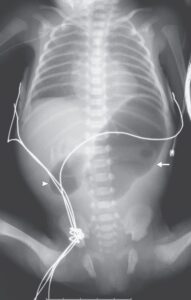This article is an answer to the Case – Retiform Purpura and Coalescent Ulceronecrotic Lesions
A biopsy specimen of the abdominal skin was obtained, and histopathological analysis revealed thrombosis of medium-sized arteries, which were surrounded by a lymphohistiocytic infiltrate that contained plasma cells and foamy macrophages.
Fite–Faraco tissue staining revealed multiple acid-fast bacilli, with invasion of the vascular endothelial wall, and a polymerase-chain-reaction assay showed Mycobacterium leprae.
The development of severe, necrotizing, cutaneous lesions in patients with diffuse lepromatous leprosy, known as Lucio’s phenomenon, is uncommon. Treatment in this case included multidrug therapy for leprosy (rifampin, clofazimine, and dapsone), systemic glucocorticoids, and anticoagulation therapy.
The patient’s fever and dyspnea resolved within 2 weeks after hospital admission, and after several months of wound care, the skin lesions healed, although atrophic and retracted scars remained.
References
- Gregory Cavanagh, Andy Goren, Carlos Gustavo Wambier. (2022) Circulation, sensation, and hair growth: A reply. Journal of the American Academy of Dermatology 87:2, e79.
- Prasanta Padhan, Debashis Maikap. (2021) Bilateral thickened great auricular nerve in a case of Hansen’s arthropathy. Clinical Rheumatology 40:11, 4771-4772.

